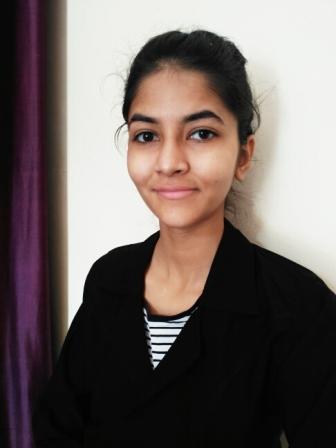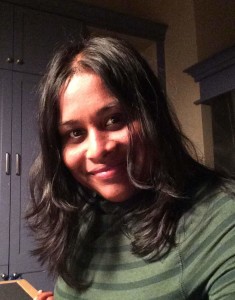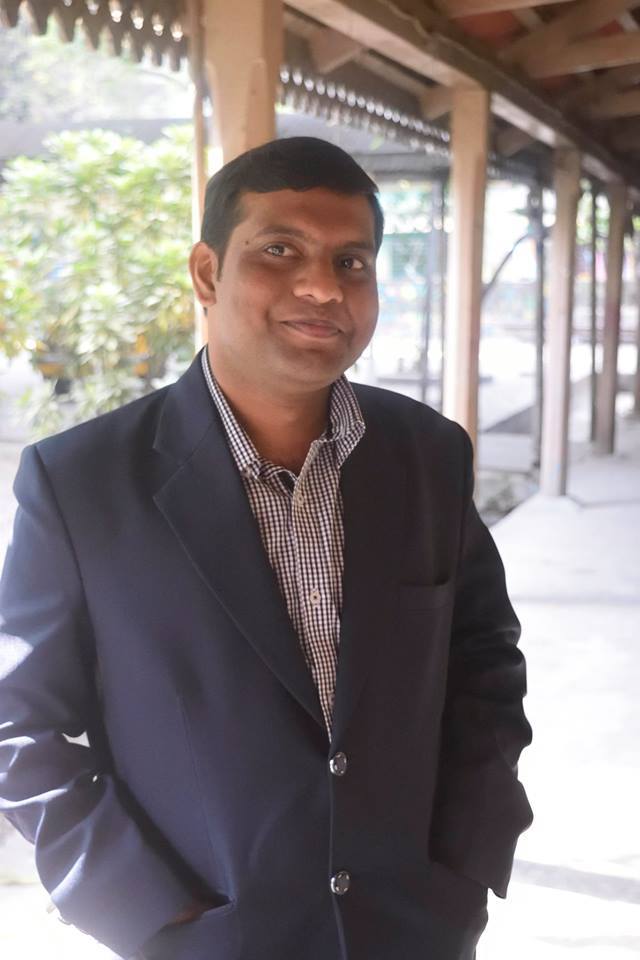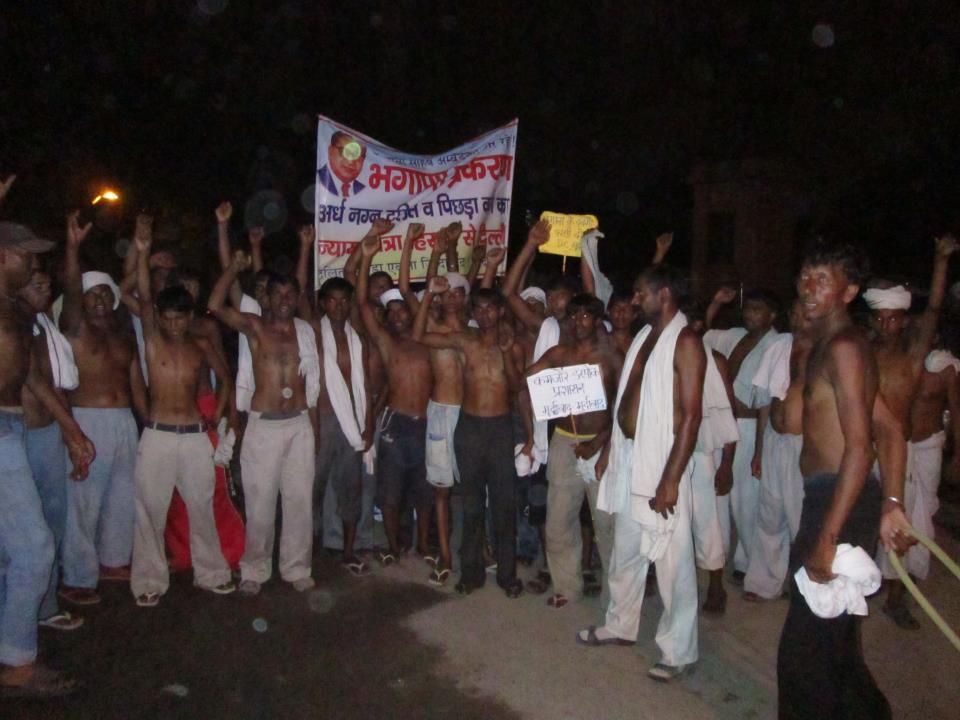Deepika Parya & Sahil Barhate
The presence of caste discrimination in Indian Universities predates independence. The introduction of National Law Schools was necessitated by the dearth of competent legal professionals in the country. However, inaccessibility to these institutions is not only marked by the so-called ‘entrance tests’ but also the unjust structures that are replicated herein. This piece comes in the wake of multiple students speaking up about incidents of caste related violence across premier National ‘Law’ Schools. We have attempted to shed light on some of the issues that we as Dalit students of NLU-Delhi have faced.
I. The liberty of Dalit-Bahujan-Adivasi women’s assertions
 Joining college led me to think of society in a new light. Here, I learned to question injustices. I learned about Privileges and disadvantages owing to one’s social identity. My introduction to feminism changed my world-view drastically. Every conversation had to be dissected to address the social issues therein. Unfortunately, even though there is a wide open feminist platform to deliberate upon topics such as sexist songs & sexual harassment, the pervasive liberal brand of feminism has failed to acknowledge the malaise of caste. The activism on campus has been unsuccessful in broaching this issue, leaving a huge hole in the fabric of the social justice it preaches.
Joining college led me to think of society in a new light. Here, I learned to question injustices. I learned about Privileges and disadvantages owing to one’s social identity. My introduction to feminism changed my world-view drastically. Every conversation had to be dissected to address the social issues therein. Unfortunately, even though there is a wide open feminist platform to deliberate upon topics such as sexist songs & sexual harassment, the pervasive liberal brand of feminism has failed to acknowledge the malaise of caste. The activism on campus has been unsuccessful in broaching this issue, leaving a huge hole in the fabric of the social justice it preaches.
I remember my father being proud of me for reasons like my lighter skin tone, language proficiency my convent education granted me, or my relatively higher grades in school. I realised how it was fundamentally dictated by the need to stay clear off caste stereotypes. It is astonishing that factors such as skin complexion and grades become bearers of caste power structures. Lighter skin tone is a trait of the savarna women, primarily. Brahminical patriarchy paints the average Dalit woman as a promiscuous, aggressive woman with foul language who is also inherently dishonest and looks conventionally hideous. These prejudices perhaps come from the fact that Dalit women were forced into Prostitution by Savarna men centuries ago. The savarna male gaze dictates the way women should dress and carry themselves so as to not appear ‘unsophisticated’ or ‘rustic’. Bahujan women have it so deeply internalized that these become the sources of mild pride.
Meritocratic liberalism coupled with Brahmanical patriarchy further antagonizes the Dalit woman. It is amazing to see how some campus Savarnas abuse their position of privilege, disregarding incidents of sexism that are particular to Dalit women, by hiding behind the facades of feminism and progressive politics; all this while showing no hesitation in using caste based expletives. They refuse cleaning personnel to use their washrooms on the pretext of cleanliness but forget that these are the same women who clean their filth. It is their casteist mindset manifesting as a hygiene concern. Dalit women are still viewed by savarna liberals as filthy and not worthy of human dignity. To them, we are merely the subjects of their virtue signaling. Campus liberals particularly revel in acting as the saviors of Dalit women from toxic Dalit masculinity and intersectional violence, refusing to come to terms with the fact that it is their actions that lie at the root of the problem.
While forums on campus like the gender Circle’ tout feminism, they have failed to account for intersectionality between Caste and Gender in their discourse. Caste has been blindsided and an ‘ideal liberal’ brand of feminism is practiced. It has been characterised by a near-absence in the discourse of Dalit women’s narratives and lived realities. Liberal feminists have failed to factor in caste which is a gigantic impediment in Dalit women’s access to academic spaces, workplaces, and the political domain. All feminist discourse caters to Savarna women’s narratives; it is the subsuming of the Dalit women’ identities. Brahminical patriarchy is then treated as of secondary importance. The near absence of Bahujan women’ narratives in feminist discourse is tantamount to refusing to acknowledge the elephant in the room that is caste. Dalit women have not come up to talk about their experiences and it does not surprise me. Dalit women still do not feel safe enough to talk about it in Savarna dominated spaces.
On a campus filled with dog-lovers who care about protesting against cruelty towards animals and preaching veganism, never have I heard a group of students hanging out talking about caste-discrimination and its adverse effects on DBA women.The state of affairs is such because of the reluctance on the part of the Savarna liberals to introspect about their privilege and authority. However, this is something that goes beyond the confines of this campus; it is society at large that has failed to deal with these issues.
In today’s digital age, social media is replete with keyboard warriors taking a stance on some issue or the other. Caste, though, remains shrouded in silence. It is mostly because it flies right past the bubble of privilege that protects their eardrums invariably.
The ignorance about Dalit women’ struggles, is a result of the reluctance in hearing about their lived realities. And even when they do speak up, they are immediately shut down. Take, for example, Raya Sarkar’s List of sexual harassers and the backlash it faced. Savarna ‘Lean-in’ Feminism must be disavowed. Education on Dalit feminism is immensely needed today to make visible the casteism and sexism Dalit women in our academic and public institutions face. We need a safe space where Dalit-Bahujan-Adivasi women can get a platform to make it apparent to the world what has been so far very strategically avoided by Savarnas. On a final note, I would like to urge my fellow Dalit folk to step up and speak out! Jai Savitri, Jai Bhim!
In Solidarity,
Deepika Parya
~
II. The making and demonizing of the ‘other’
 Although I walked into this campus dewy-eyed, it did not take me long to figure that nothing holy or godly could ever grow in its shadows. Unlike a lot of people who joined with me, it wasn’t my first brush with the palpable inequalities of life or how social institutions played out to make life miserable for you. As someone hailing from a prudish & conservative place where any kind of change is resisted with utmost vigor, college was a breath of fresh air. However, as is the case with most elite-versities in our country, there was something glaringly wrong with the discourse here. It was the conspicuous near-absence of the ‘c’ word in the narratives and discourses that dominated here. It is the underpinning of our identities that was denied acknowledgement. In extreme cases, our identities were reduced to our castes. Obliviousness towards the construction of individual and group identities and privilege is the norm around here. Some are deliberate and conscious attempts at obfuscation while the rest are just unconsciously perpetrating.
Although I walked into this campus dewy-eyed, it did not take me long to figure that nothing holy or godly could ever grow in its shadows. Unlike a lot of people who joined with me, it wasn’t my first brush with the palpable inequalities of life or how social institutions played out to make life miserable for you. As someone hailing from a prudish & conservative place where any kind of change is resisted with utmost vigor, college was a breath of fresh air. However, as is the case with most elite-versities in our country, there was something glaringly wrong with the discourse here. It was the conspicuous near-absence of the ‘c’ word in the narratives and discourses that dominated here. It is the underpinning of our identities that was denied acknowledgement. In extreme cases, our identities were reduced to our castes. Obliviousness towards the construction of individual and group identities and privilege is the norm around here. Some are deliberate and conscious attempts at obfuscation while the rest are just unconsciously perpetrating.
With every passing day, it became more evident. Subjecting certain people, who did not conform to an idea of what was standard around here, to micro-aggressions was commonplace. But the worst was yet to come. It turned out this space adhered to a social justice morality, one that called for inclusivity -Enter virtue signallers- People who had made snide remarks with casteist/ classist undertones not very long ago were now seen delivering sermons on equal opportunity, feminism, and gender justice. What was still conspicuously missing was the debate around caste, intersectionality and the dynamics that emerged thereof. Gradually, I figured that at the root of this apathy was a deeply entrenched privilege, something the messiahs on campus were not willing to acknowledge, let alone abandoning it. Even today, there is a mass denial of the fact that centuries old caste capital makes up a major portion of one’s privilege, something that many of us here were deprived of.
The irony of expecting someone to conform to a dominant mainstream social culture is lost on the ‘saviors’ here. A social propriety that lives on in-grouping and out-grouping of individuals based on their social capital, their demeanor, their language proficiency and in the way they dress in public is inherently discriminatory in nature. I mince no words when I say that most Savarna liberals here have been complicit in creating this semblance of inclusivity on campus.To further their own ends, people used us as tokens of representation and as a proof of their magnanimity. One instance that I am reminded of is my second year in college, where during a debate in class a savarna student expressed his doubts about the ability of a Dalit student to voice his opinions. Such denial of our agency is patronizing, condescending and is a reflection of the prejudices that people here have so deeply internalized.
It is obvious that such a brand of liberalism goes together with ill-founded meritocracy. Such meritocracy hides behind the garb of what people here fondly call ‘competition’. Thus, the ideals of equal opportunity, equity, and representation the liberals otherwise use to score brownie points are tossed in the bin. The competition then becomes a pretext for blatant casteism. Micro-aggressions are normalized. It starts off with how undeserving a Dalit student is and could go as far as making fun of Dalit symbolism and iconography.
There have been numerous attempts at pointing out the toxic nature of such underlying sentiments in the everyday dynamics of this ‘liberal’ institution. The administration, far from acknowledging the malaise, protects and perpetuates this rot. On one occasion, the administration deemed it fit to send a list of students who had not paid their fees category wise. It was not long ago that rooms were allotted in order of entrance exam scores. Every year, the list of detainees- students detained in the same academic year- has been inundated by students belonging to the SC/ST categories. When it was pointed out to a senior professor by one of my seniors, she dismissed it as something that was typical to people who belonged to the ‘categories’ and to substantiate her claim, she walked him through the academic records archive. Colossal systemic failures are individualized and pinned on Dalit students. To that end, they are labeled as lazy and vacuous. So after enduring a less dignified, ‘unmerited’ and sisyphean ordeal that this institution is, the fault still lies within us. One more instance of hostility from the system was a professor expressing her disappointment in class about how difficult it is to make it to a certain top-notch educational institution in the country for a ‘general category’ student. After all this, they have the gall to whitewash caste. They have the audacity to ask us to ‘roll with the punches’. Perhaps a debate on brahmin-splaining is in order. They talk about being a ‘family’ but call us suicidal in the same breath. They work to push us over the edge and when a Dalit dares to say anything, it brands them suicidal. Here’s the deal- Dalit students aren’t suicidal, your brahhminical institutions are homicidal. Rohith Vemula and countless others have fallen prey to such institutional homicide. I really wonder whether there is an end to this systemic violence. The Savarna structures that underly the essence of this institution are stacked against the ordinary Dalit student. This is to say that Universities in general, to which this campus is no exception, exist to widen the accumulated social capital of Savarnas. Perpetration of passive discrimination and social capital are things this institution has been complicit in.
Neo-Savarna Liberalism and faux-egalitarianism are not where this stops at. Savarna hetero-patriarchy does its bit as well. Brahminical patriarchy paints the Dalit man as an immoral, promiscuous, violent, homophobic and an inherently anti-feminist brute; or simply ‘the other’or the term savarna liberals here prefer- ‘a creep’. ‘Hooligans’ and ‘ruffians’ are just some of the appellations you are adorned with. So liberals ensure that the Dalit man is pushed to the fringes as he is the epitome of everything that makes women on campus feel unsafe and that he must take the blame for all the troubles Brahmin patriarchy and entitled Savarna men cause. This is the intricately woven safety net the Savarna men can fall back on. Thus, the Savarna feminist tacitly and at times openly shields the savarna man from aspersions. The priority then shifts from gender to caste when a savarna man ‘messes up’. We really need to ask ourselves who benefits out of the propagation of such biases. Savarna Liberal ‘intellectuals’ coming out in defense of their cronies is not something this institution is new to. Simultaneously, they partake in stereotyping and profiling the Dalit man. This is campus liberalism at its most vulgar glory.
Although this was written keeping in mind the issues that I and others as Dalit-Bahujan-Adivasi students face at NLU-D, this is not something that is confined to our campus. These are systemic issues that run much deeper. Not all is lost though. To combat these, we must come up with solidarities that go beyond the boundaries of institutions. We must create an atmosphere of dialogue and discourse; we must claim and occupy spaces, the ones that rightfully belong to us. Jai Savitri, Jai Bhim!
In Solidarity,
Sahil Barhate
~~~
Sahil Barhate currently studies in the fourth year and Deepika Parya is in the second year at Nation Law University, Delhi. Along with others, they run a student collective on campus called ‘NLUD Solidarity’ that works towards labor workforce consolidation and Dalit issues. Deepika’s areas of interest include gender justice, caste and intersectionality and she wishes to explore the legal framework of these areas in the future, whereas Sahil’s field of interest is caste and poverty paradigms.










